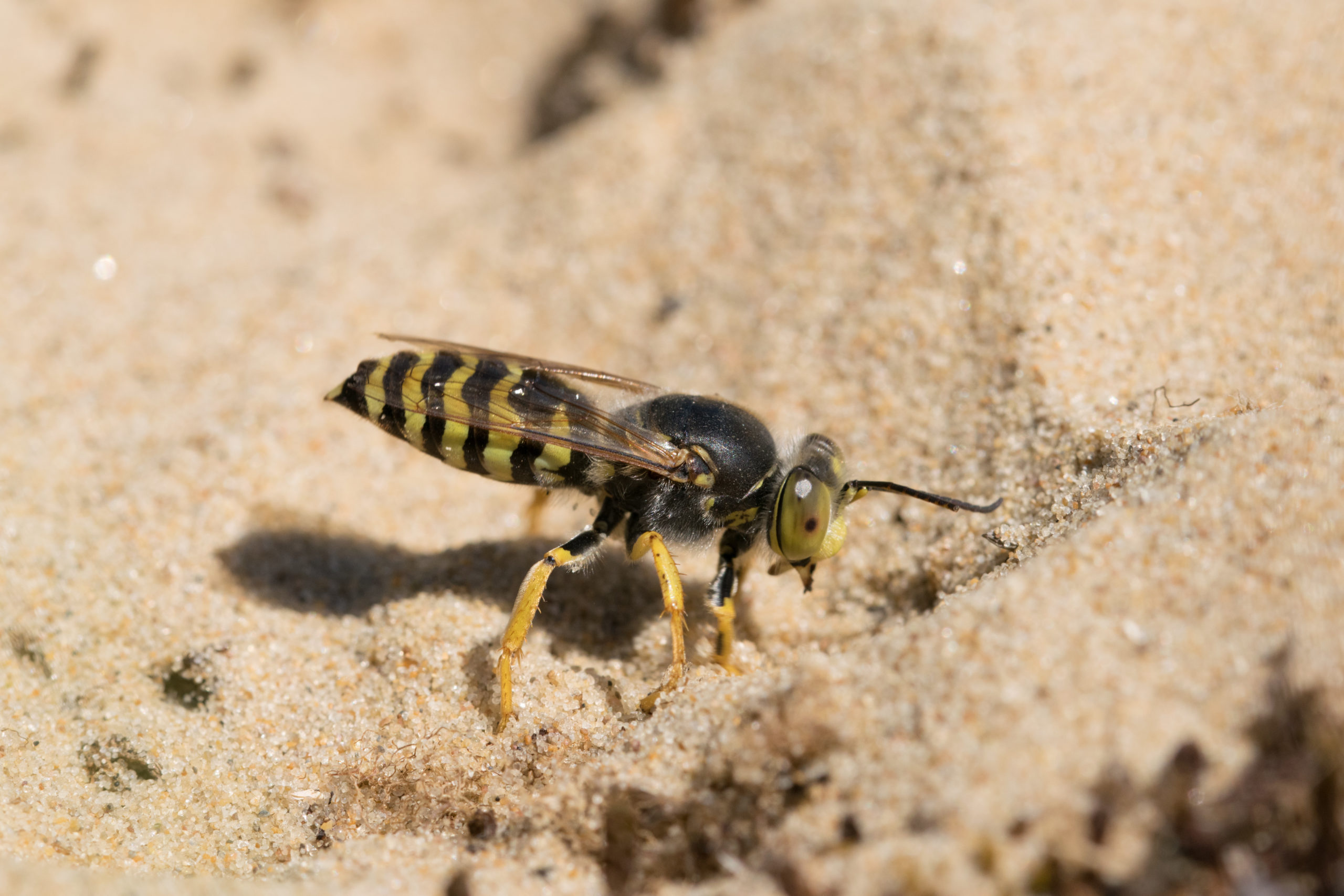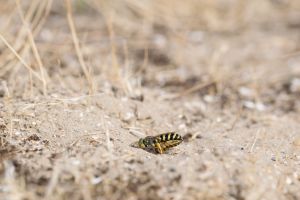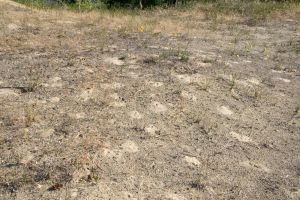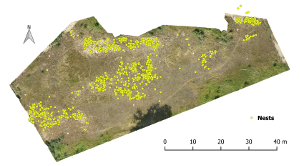
Dr. Femke Batsleer
Terrestrial Ecology Unit
Department of Biology
Ghent University
K.L. Ledeganckstraat 35
9000 Gent Belgium
Phone: +32 (0)9 264 52 93
E-mail: femke.batsleer@ugent.be
The spatial ecology of a highly endangered host-parasite interaction
Movements at small spatiotemporal scales determine home range or territories, while long-distance dispersal leads to gene flow and metapopulation dynamics. Movement is thus a central life history trait that eventually determines persistence at several hierarchical spatial and temporal scales. My research is focused on studying the mobility of the digger wasp Bembix rostrata and its parasite at different spatial and temporal scales.
Bembix rostrata (Harkwesp in Dutch) is a specialised, highly philopatric, gregariously nesting digger wasp (Hymenoptera: Crabronidae) found in sandy regions in Europe. The females of this species show a high level of brood care: they bring flies to provision their larvae in their burrows in the sand. A broodparasitic fly species deposit its maggots on the provisioned prey of the females. My main study area is located at the Belgian West-coast, covering dune areas from De Panne to Nieuwpoort.
My research has 3 major subdivisions by scale:
- At the regional (highest spatial and temporal) scale, I will use a landscape genetic approach to understand the nature of dispersal for both Bembix rostrata and its parasite. At the same spatial scale, metapopulation dynamics of colonies will be studied and modelled, using an explicit landscape context.
- At the local scale, I will study the spatial patterns of nest aggregates, examining both bottom-up and top-down regulators. The nest site suitability predicted by a microhabitat model, is defined as a bottom-up regulator, while the top-down regulator was defined by the selfish herd mechanism, in which high nest densities have lower individual chance of parasite infection. This research will also be extended with an individual based model (IBM) to go into depth of the self-organisation mechanism of nest clustering
- At the individual scale, bet hedging and other nesting behavioural responses on parasite abundance will be studied using detailed quantification of nest provisioning, body condition and emergence rates in function of parasite abundances.
An extra focus of my research are the conservation implications for this highly endangered digger wasp.



